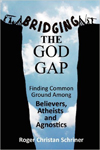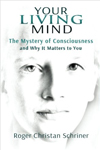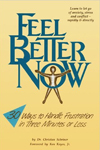I have not been on this site for a while, but I now may have time to begin posting occasionally – perhaps even regularly – again. Here is a talk I presented at the Unitarian Universalist Fellowship of Sunnyvale, June 5, 2022. I may also post it on some of my other sites. This is part one of a series. The next post is part two.
ILLUSION NUMBER ONE, PART ONE:
Report from Planet Three
©Dr. Chris Schriner 2022
[Walk to the lectern, wearing antennae.] How very strange and wonderful to be back on my home planet! Two years is a long time to be gone, and it certainly seemed like ten years to me. In case any of you are unfamiliar with my expedition, I should explain that I traveled to Planet Three in Solar System 3079. For two years I lived on that planet among the Northern Californians to study their peculiar humanoid ways of thinking, speaking, and acting.
Now that I am back on our beloved planet Centros with you, my fellow participants, I am ready to report my findings. (But first, if you don’t mind my being a bit casual, I’d like to remove my formal antennae. Ahhh, that’s better.)
This morning I will discuss a concept that is used every day among Earth people, but which is quite difficult for us here on Centros to understand. This concept is expressed by a word that is spelled S-E-L-F, pronounced, “self.” This syllable is combined with other words that refer to persons – myself, yourself, ourselves, and after two years on Earth I will probably lapse into using these terms “myself.” Earthlings use the word self in referring to who they are – to themselves, as they would say. We have translated this word into our term centerspace, because you and I think about who we are in terms of centerspace – we are centers of consciousness, centers of feeling and thinking and activity. Such a translation could not possibly have been more misleading! The term centerspace and the term self, as used on Earth, are totally different.
Center implies that the center is part of something else. If I hold up this paper and say to you, “Show me the center of the page,” you point toward the middle of it. Obviously this central area is continuous with the rest of the paper; it is not something separate. But the Earth idea of self actually implies separateness, as if humans were free from outside influences. One of their most famous poems reads, “I am the master of my fate, the captain of my soul” (From “Invictus,” by William Earnest Henley).
The line of demarcation between the self and the “outside” world is presumed to be the human skin. Seriously! You and I are vividly aware that our skin is interpenetrated as we breathe and eat. Cosmic particles pass through us all the time, and perceptions penetrate us as well. My voice enters you through the ears; your faces enter my eyes. Earth people know this too, because their bodies are quite similar to ours, and just as permeable. Yet they still imagine that whatever is inside of the skin, is them.
Some of their scientists are now questioning this myth of the separate self. While visiting California, I went to a lecture by a minister – his name was Dr. Shiner or Schrimer – who talked about “Family Therapy.” In the past few decades psychotherapists on Earth have discovered that members of a family interpenetrate each other psychologically – imagine that! – and that the best way to change the behavior of one member of a family may be to gather the whole clan and work on the family system. This is an example of what they call “systems thinking,” and Dr. Schrimmer was so charmingly excited about this idea. I endured his little sermon, smiling to think that this is apparently a new insight for Earth people.
Systems thinking seems to be catching on in this fellow’s church, the Contrarian Universalizers I believe it was called. I heard their choir singing about the interdependent web of existence, but I doubt that Schimer and the others really understand this idea.
One Earthling who actually seemed to see through the illusion of separateness was a writer named Alan Watts, now deceased, and I’m going to quote him a lot. Listen to this wonderfully ironic passage from a work of his called, The Book: On the Taboo Against Knowing Who You Are.
Society … pulls [a] trick on every child from earliest infancy. … the child is taught that he is … a free agent, an independent origin of thoughts and actions – a sort of miniature First Cause. [The child] … accepts this make-believe for the very reason that it is not true. He can’t help accepting it…. (P. 65)
We seldom realize … that our most private thoughts and emotions are not actually our own. For we think in terms of languages and images which we did not invent, … We copy emotional reactions from our parents … we do not exist apart from a society. Society is our extended mind and body.
[And Watts concludes:] Yet the very society from which the individual is inseparable is using its whole irresistible force to persuade the individual that he [or she] is indeed separate! (P. 64)
But – even as some humans are questioning the illusion of the separate self, others are reinforcing and exaggerating this idea. Certain popular psychotherapists not only say that each so-called “individual” is like a little walled city, they imply that our personal walls are tall and strong enough to withstand any outside force. One should take total responsibility for one’s own fate. So obviously if people have financial problems, it must be their fault. If someone catches a cold, a pop-psychologist might ask, “Are you in touch with how you created that cold? Why did you want to get sick?”
Here’s another problem. Since they don’t realize how much they are influenced by outside forces, humans are dismayed that their so-called social media are warping people’s political beliefs, pushing them into extreme camps that are all confident of their own righteousness. Here on Centros, most of us make the default assumption that “I can be manipulated.” This helps us guard against those who want to pull our strings, conning us into feeling fear and anger, fear and anger, warping our ability to look at personal and political issues calmly and compassionately.
So the first key difference between our concept of the personal center, here on the planet Centros, and the human concept of self that I discovered while visiting Earth, is that Earth-people see the self as separate from the rest of reality, whereas you and I know that our personal centers are continuous with everything that surrounds us.
A second remarkable oddity about the Earthling idea of “self” is that the self supposedly continues through the passage of time. When you and I speak of the way we “were” in the past or “will be” in the future, this is just a convenient way of speaking. Obviously I’m not the same person I was five or ten years ago. Earth people dimly realize this, and yet they actually maintain that they’re the same person when they were conceived as when they die. I’m not making this up!
Perhaps this illusion of personal continuity is reinforced by the strange custom of using the same name throughout their lives. On our planet. you and I are identified by a code-cipher. But by adulthood each of us has acquired well over a hundred names, which would be quite confusing to humans with their lower intelligence. We have fun with this diversity, but on Earth, there is one name, and they take that little identifying tag so seriously! If you want to irritate Earthlings, just mis-pronounce their names or make fun of them. They get so upset. And this ties into what I said earlier about their delusion of separateness. As Alan Watts put it, “Confusing names with nature, you come to believe that having a separate name makes you a separate being” (The Book, p. 63).
Because they assume that their identity persists, many humans feel great pride or shame about what they did or did not do in days long gone by. They also obsess about death, wondering whether their continuous stream of personal identity will keep going in an afterlife. Here on Centros we also treat death as a mystery, but it is just one small aspect of the greater mystery of change; we’re changing all the time. But Earth people find it almost impossible to see that all creatures are dying and being reborn every second.
Again Alan Watts tries to help them see the obvious. He writes that,
A human body is like a whirlpool; there seems to be a constant form, called the whirlpool, but it functions for the very reason that no water stays in it. (P. 43)
Watts was influenced by a religion called Buddhism, which declares that “all things are impermanent, all is without a self.” But I wonder how many Buddhists truly grasp this teaching.
So humans think their skin separates them from the rest of the world, and they believe that the contents of this bag of skin persist through time. The third and final difference between our view and theirs is that they conceive of themselves as internally consistent. Inside their skin there is a single united personality. Of course, you and I are keenly aware of having many, many “selves” – hundreds of potential ways of thinking, feeling, and acting. We expect to experience internal conflict and ambivalence, and we set up our lives and our society in ways that reflect this reality. Earth people have even more inner conflict than we do, but they will not admit that this is their natural condition. There’s something wrong with them if they have mixed feelings and contradictory thoughts. They become particularly upset if their government leaders show any sign of inconsistency; they call this flip-flopping. You and I would assume that any leader who is unable to “flip-flop” must be mentally defective.
If humans thought twice about it they would realize that they undergo radical personality shifts from one situation to another. The very same individual may be a doormat at the office, a tyrant at the dinner table, and a whimpering child in the dentist’s chair.
One of their psychologists, Robert Ornstein, seems to realize that each person has many facets, and he cites examples of human inconsistency. He wrote about an experiment in which people role-played guards and prisoners, and took on those roles to an unsettling extent, and also a study in which people made obviously false statements about the length of a line, after several other people – who were actually actors who were lying about how long the line looked – had made such statements. Here’s one more example from his book, Multimind:
Imagine that you are alone in a room and hear someone cry for help … Would you help? Probably. Now, imagine that you are sitting with a few other people when you hear a cry for help. Would you go to help? … No, probably: you are three times less likely to help if there are six people in the room than if you are alone. The group we are in has a profound effect on us, more than we would like to think. … we compare our attitudes with those of the group; we make decisions we never would have made if we had been alone. (P. 88.)
Thinking every person has a single unified personality blinds Earthlings to the possibility that if circumstances change, they may change, and change radically. For example, Americas have a horrible problem with gun violence, and many say the solution is to keep guns out of the hands of criminals and those with serious mental illnesses. Of course, that is important. But on our planet we realize that in the right circumstances ordinary individuals may do terrible things. That is also true of humans, and many who kill with guns are not criminals or obviously mentally ill. Even though they were “normal,” they had the potential for violence. Here on Centros, one of our default assumptions is: “I may be dangerous without knowing it.” If normal humans have the potential to become dangerous to others or themselves, should Americans own so many firearms?
We here on the planet Centros also understand that even if someone commits a terrible crime while one aspect of the personality is in control, other aspects of that person may be positive and even compassionate. But some of the most influential religions on Earth teach that God judges each person as either good or bad, and sends the good ones to paradise and the bad ones to eternal damnation – as if each person were consistently good or evil. They sometimes sense that there’s a saint in every sinner and a sinner in every saint, but usually their view of the goodness or badness of each center of consciousness is astonishingly one-dimensional. They then project this limited and ignorant understanding onto their deities.
Earth people are insightful in some ways, and deluded in other ways, but I think this idea of self is human illusion number one. They imagine that the self is separate from what is not-self, endures through the passage of time, and is internally consistent. And unless one realizes that Earth-people really believe these three ideas, one cannot begin to understand what it is like to dwell on Planet Three of their solar system.
If I could give any gift to the Earthlings, it would be the gift of a multi-dimensional sense of “self.” I’ve even imagined giving this talk where I saw Dr. Schweimer speak, to those University Contrarians, since they seemed rather open-minded. After the talk, I would have asked them to think about these issues for perhaps a week; noticing that the outside world does penetrate their skin, that they do change from moment to moment, and that their minds keep shifting so that various aspects of their personalities take turns running the show. After that we could gather and talk about these ideas further. And now, due to a remarkable breakthrough in intergalactic hyper-zoom, today Dr. Shreener has been listening to my lecture and he will respond to it this time next week. Please come back in seven Earth days to see what he has to say. It should at least be entertaining.
I want to close with a speculation. Perhaps the root of their odd idea of self is just a simplistic desire for neatness and order, a tendency to force reality into tidy little compartments. . But I hope that some humans have flashes of lucidity in which they realize that every conscious moment possesses such open potential and such delicious complexity! For to see through the illusion of the separate, continuous, and consistent self is to expand that little centerspace and join the larger self, the vast interconnected community of all that has breath.




